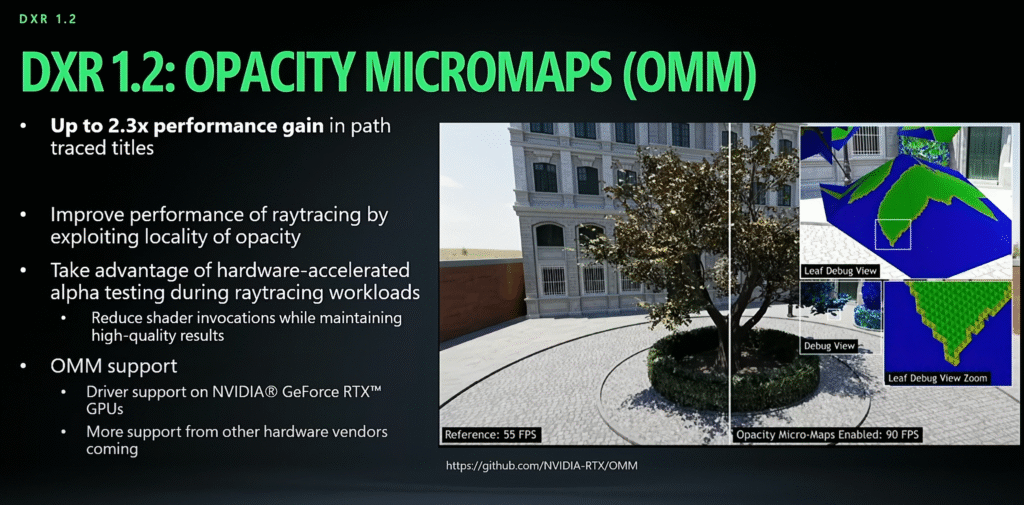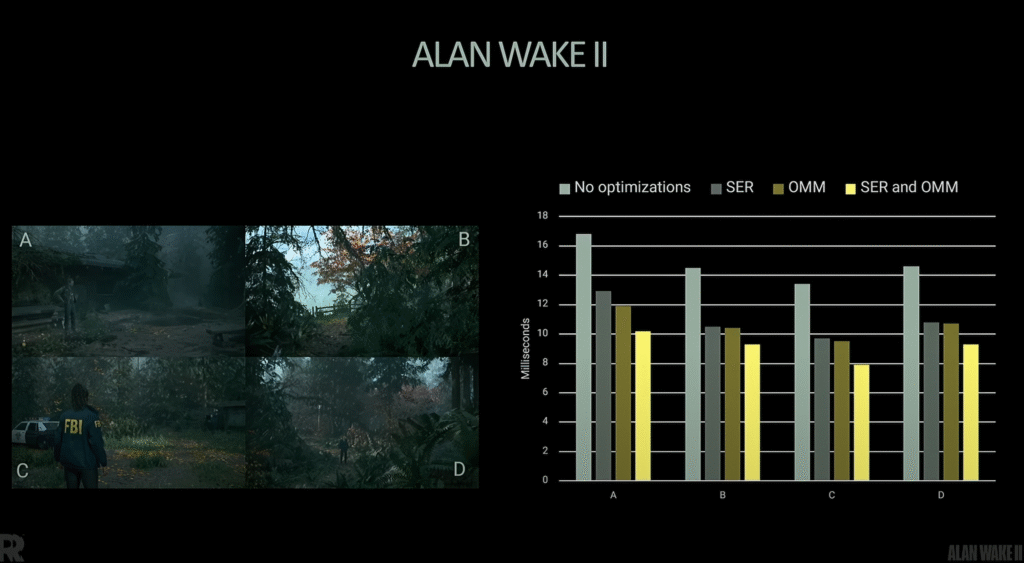Microsoft has officially rolled out its newest DirectX Agility SDK, and it’s packed with exciting updates particularly for fans of ray-traced gaming. Among the most impactful features are Shader Execution Reordering (SER) and Opacity Micromaps (OMM), two major enhancements that promise to reshape how games handle realistic lighting and performance. Ray tracing, known for delivering lifelike shadows, reflections, and lighting, can put immense pressure on even the most powerful GPUs. These new tools from Microsoft aim to ease that load by optimizing how ray tracing calculations are handled under the hood.
To put it simply, imagine your graphics card is trying to process millions of light rays at once. Shader Execution Reordering (SER) steps in to make sense of the chaos. It reorganizes how GPU threads or “mini workers” process these tasks, allowing them to work more efficiently and in sync. By doing so, SER reduces bottlenecks and boosts performance significantly. The impact? In games that lean heavily on path tracing and support SER, developers are seeing up to 2x performance improvements over earlier methods on top of gains already made by traditional ray tracing techniques. With these advancements, the future of high-fidelity gaming looks faster and smoother than ever, unlocking new levels of immersion on modern hardware.
Have you ever noticed how games render detailed visuals like fences, tree leaves, or smoke clouds? These elements often rely on a technique called alpha-tested geometry, which creates challenges for ray tracing. The GPU must analyze whether each ray of light hits something solid or passes through a semi-transparent surface a process that can be extremely demanding. That’s where Opacity Micromaps (OMM) step in. OMM gives the GPU a smarter way to handle these tricky, transparent surfaces. It allows the hardware to assess whether an area needs full ray tracing or can be simplified dramatically cutting down unnecessary calculations. The result? Much better rendering efficiency with little to no noticeable drop in visual quality. For games that use path tracing, this can mean up to a 2.3x performance boost.
While OMM and Shader Execution Reordering (SER) have grabbed most of the attention, the new DirectX Agility SDK brings even more to the table:
Cooperative Matrix (Wave Matrix) Support: This enables hardware acceleration for complex mathematical operations, which is crucial for integrating AI-powered rendering techniques into real-time graphics. The result is faster, smarter rendering workflows that adapt in real time.
Upgraded Direct3D Video Encoding: Enhancements here improve efficiency in complex reference frame handling and introduce support for two-pass video encoding. The first pass renders in lower resolution to gather data, boosting overall encoding quality and performance.
D3D12 Tiled Resources Tier 4: This major update breaks past limitations in texture streaming. Developers now gain more freedom to manage textures dynamically, which leads to better-looking environments with smarter memory usage. GPU drivers from AMD, Intel, and NVIDIA are already rolling out to support it.
Opacity Micromaps (OMM) is a new feature in DirectX Raytracing that takes advantage of hardware-accelerated alpha testing during raytracing workloads. OMMs can deliver performance improvements up to 2.3x faster by allowing supported hardware to more intelligently process complex transparency. Impressive demos have already been put on display by Microsoft and its partners. For example, OMM was able to demonstrate that NVIDIA could increase frame rates in one scene from 55 to 90 FPS, which was a greater than 60% improvement.

As games continue to evolve visually, particularly with cinematic experiences like Alan Wake, delivering high-fidelity graphics increasingly depends on technologies like alpha-tested geometry and path tracing. These demanding features can push even the most powerful hardware to its limits. For example, without modern GPU optimizations, a complex ray-traced scene might take an RTX 4090 around 16.8 milliseconds to render—putting pressure on frame rates. However, with the introduction of innovations such as Shader Execution Reordering (SER) and Opacity Micromaps (OMM), that same scene can now be rendered in just 10.2 ms.

These updates from DirectX are a major win for gamers and developers alike. As studios begin implementing SER and OMM into upcoming releases, we’ll start seeing more richly ray-traced environments that run effortlessly on today’s high-end GPUs. This is a new era of visual performance fully unlocking the potential of modern graphics hardware.
Source : Microsoft Dev Blogs

